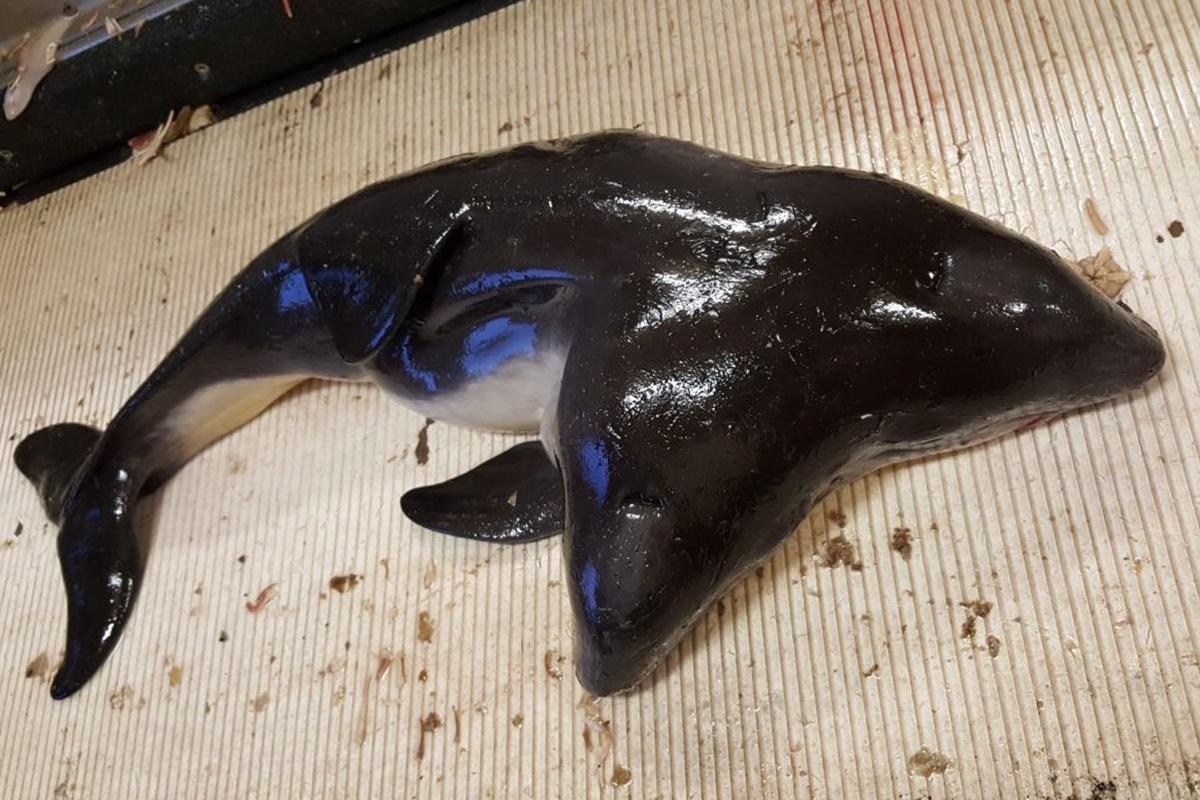A few days ago, a newly born two-headed porpoise was documented and studied by a group of Dutch fishermen and a team of researchers from several Dutch institutions.
The researchers described how the fishermen caught the porpoise, photographed it, and then threw it back into the sea, as per rules prohibiting them from keeping captured mammals. Before releasing it, they took multiple photographs and sent them to the research team.
Upon examining the images, the researchers found indicators that the porpoise had been born recently. The dorsal fins were limp, the umbilical opening was still open, and the tail had not hardened, suggesting it couldn’t swim. Additionally, both of the heads still had rostrum hair, which normally fades shortly after birth in healthy porpoises.
The research team also determined that the porpoise was male and had two fully formed heads, but only one body. They believe the porpoise was symmetrically conjoined, which occurs when two embryos fuse to form one. In other cases, a single embryo does not divide, preventing the formation of distinct twins.
Although there have been a few reported incidents of known conjoined sightings in cetaceans, this is the first time a porpoise has been seen with such a condition. Twins, whether conjoined or not, are thought to be uncommon in porpoises because porpoise calves in gestation are too large.
The formation of conjoined twins generally kills the mother, although it is unknown whether this was the case for the one discovered in the North Sea.









